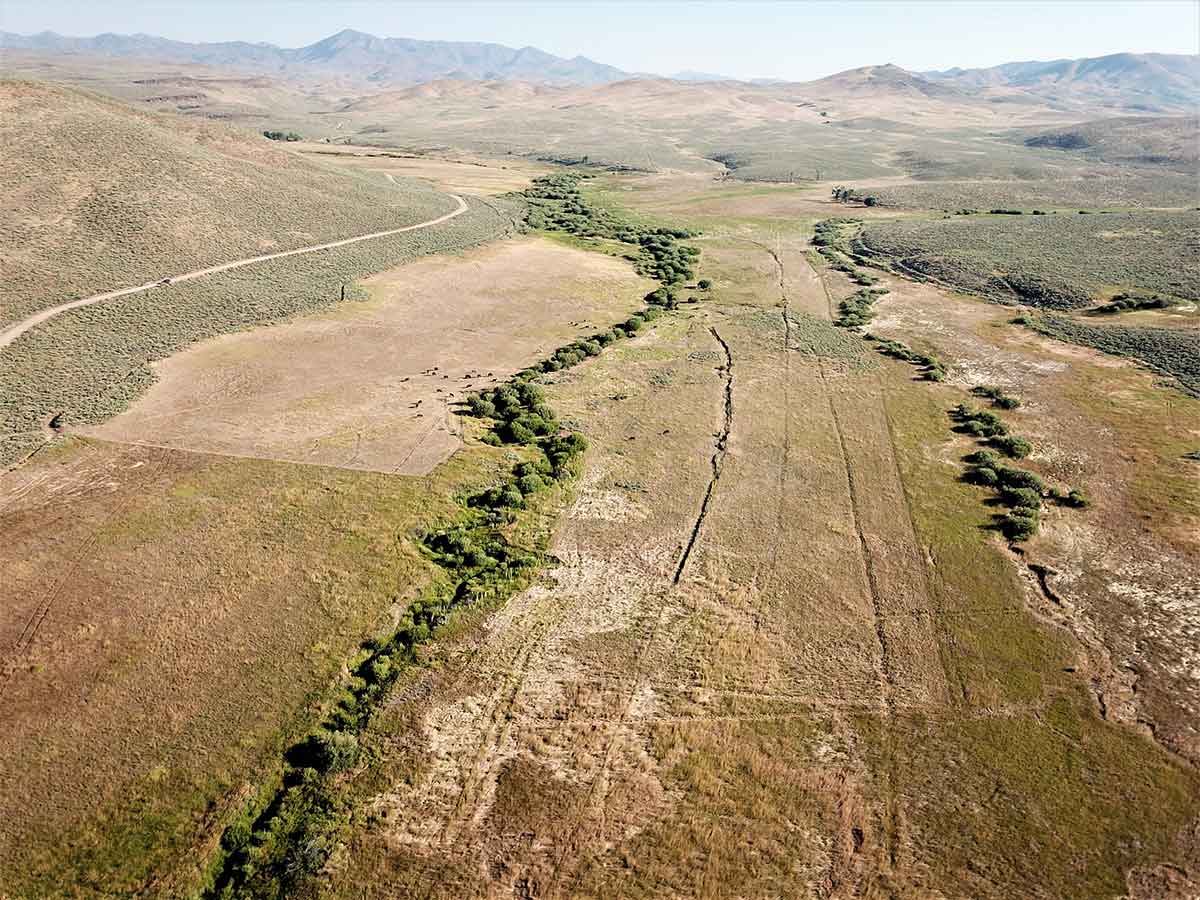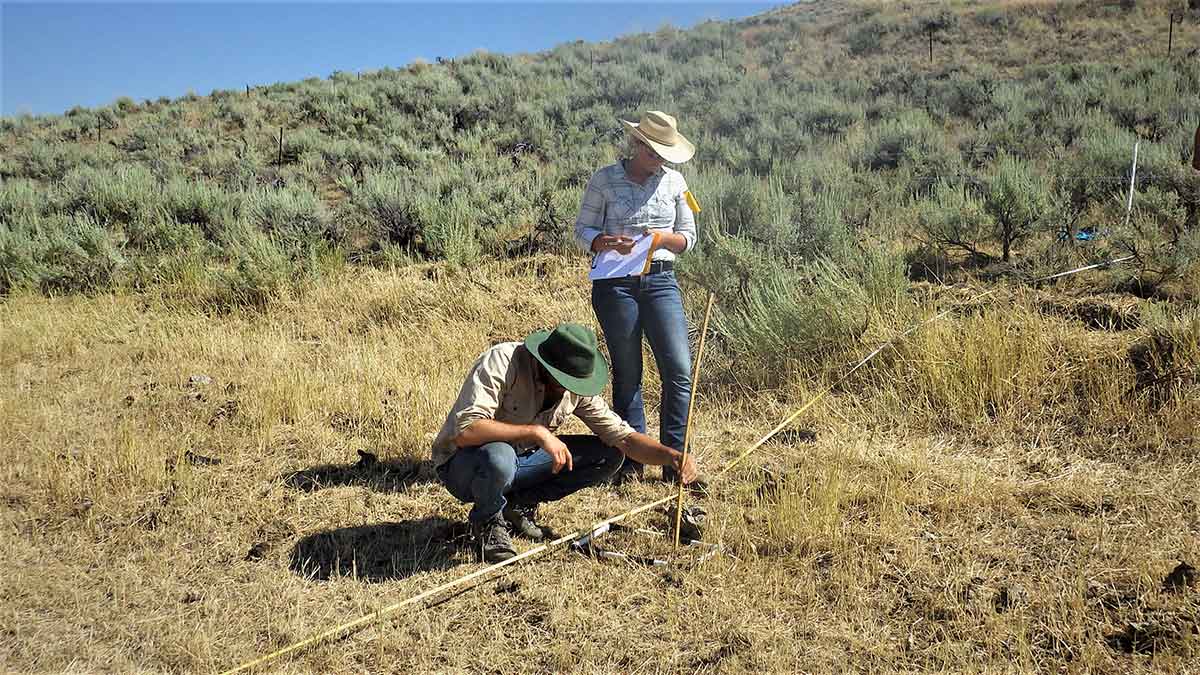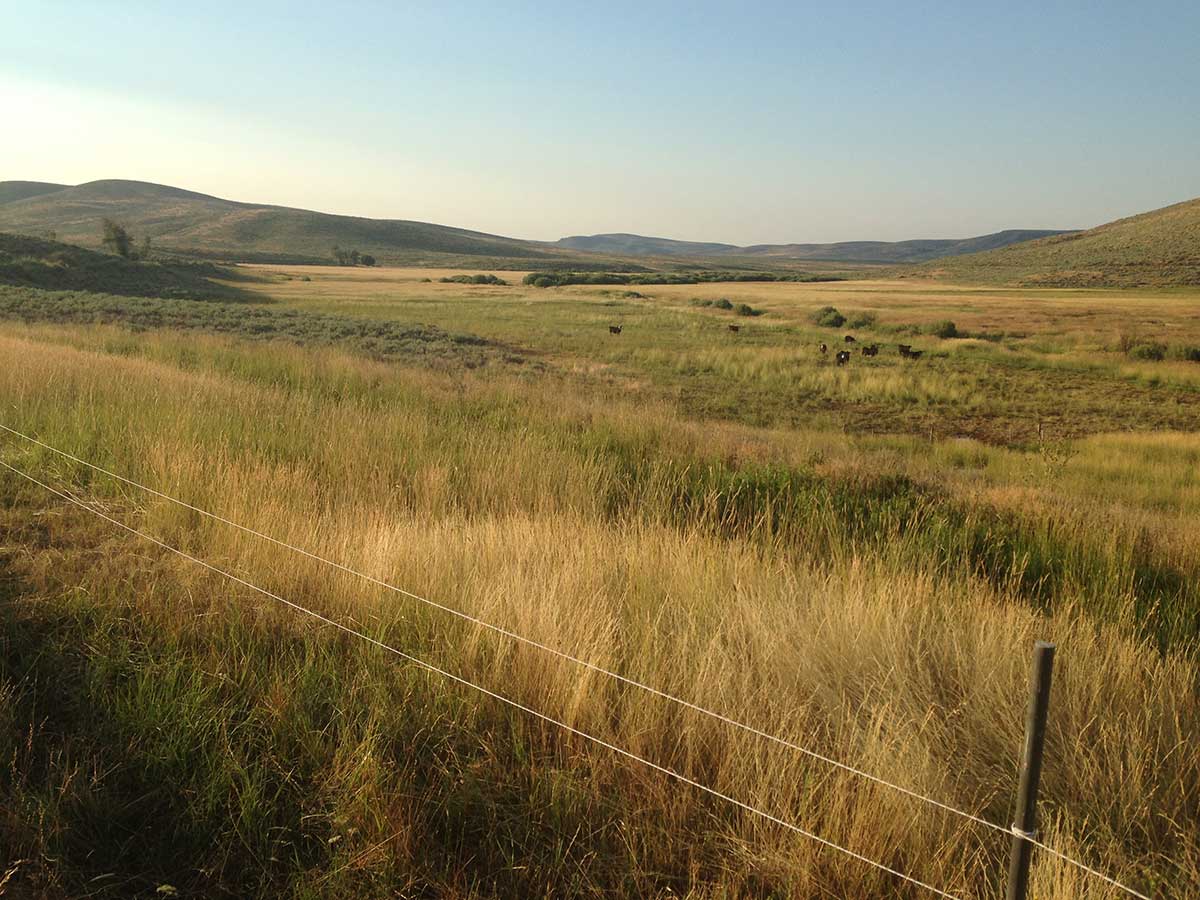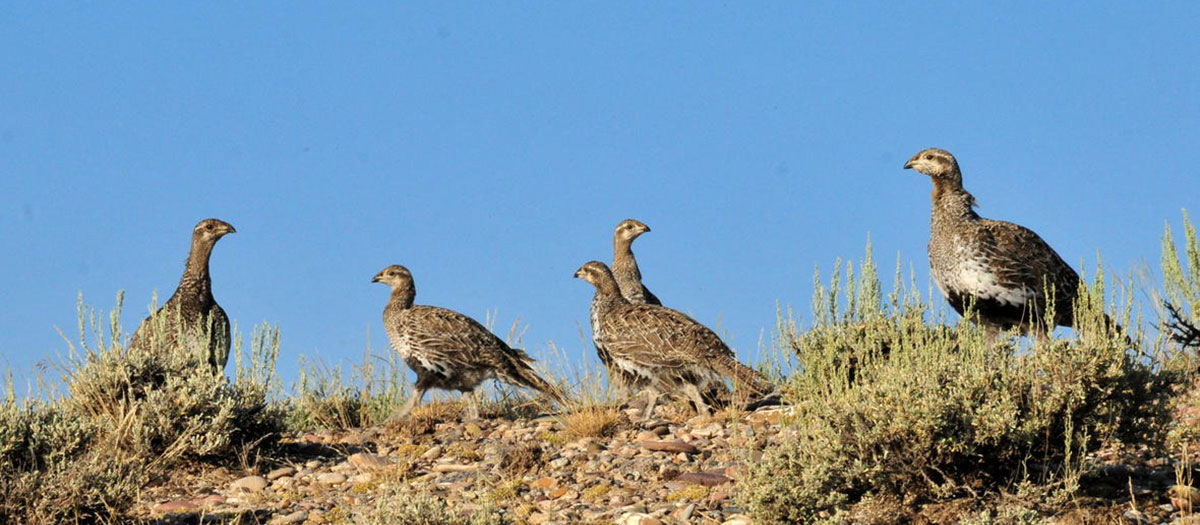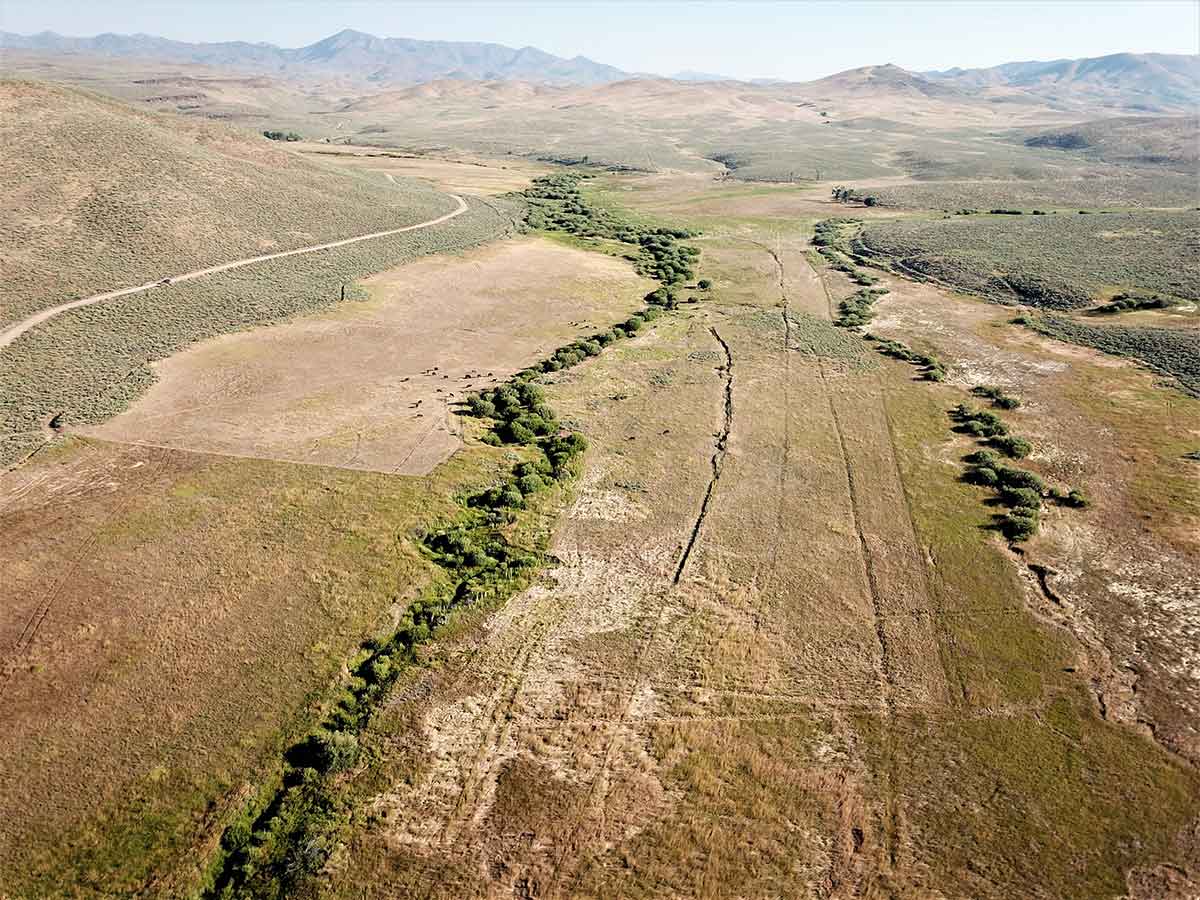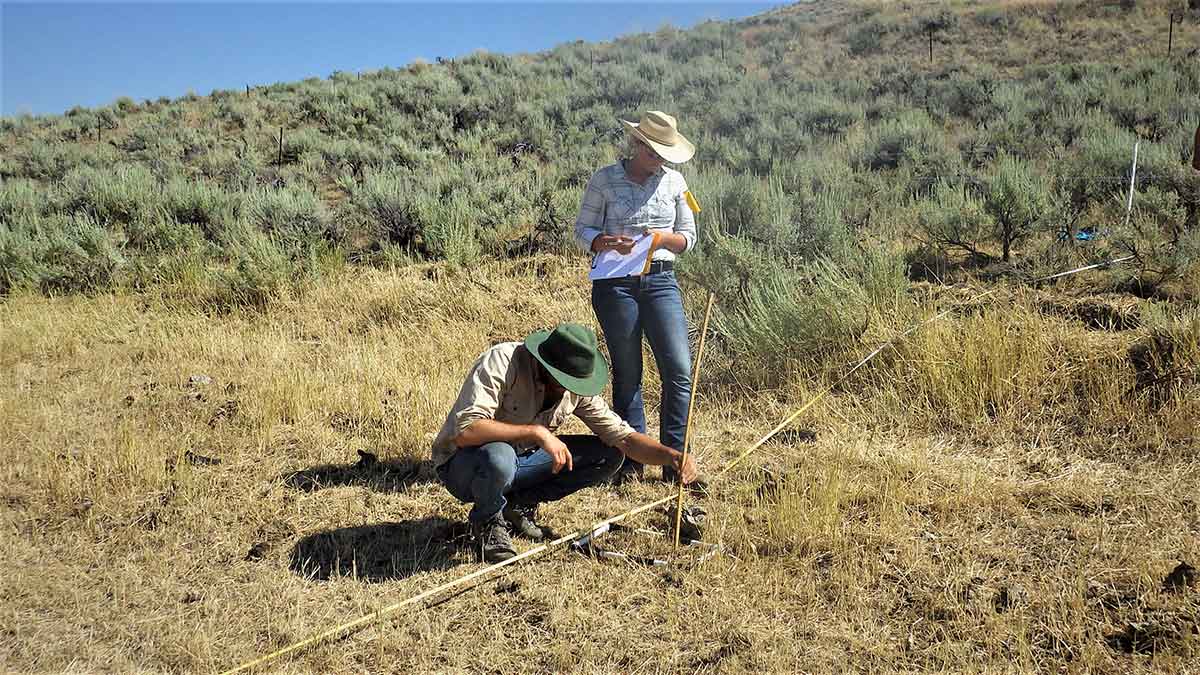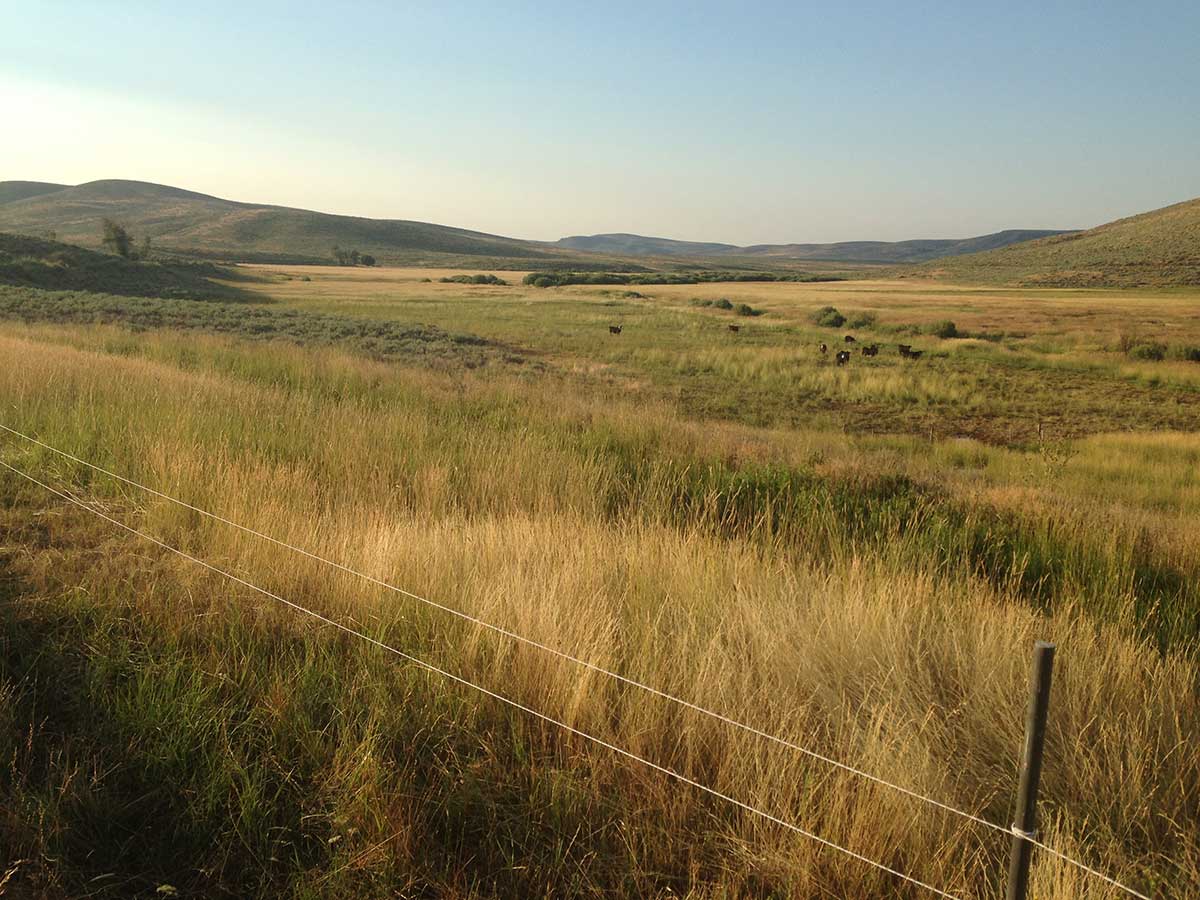Coexisting in Wet Meadows: Livestock Grazing and Sage-grouse Resources
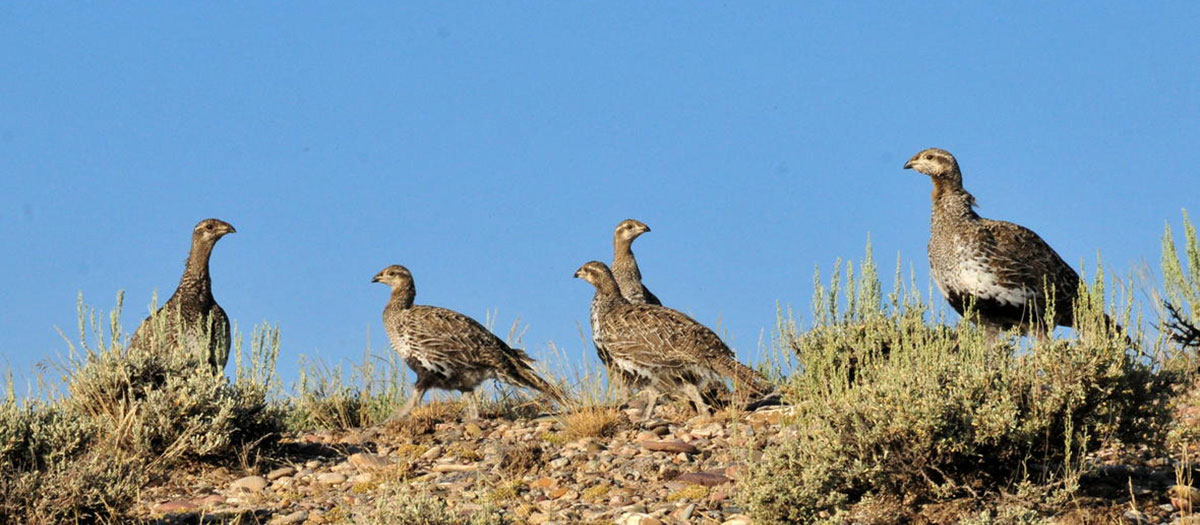
The Challenge:
Grazing is one of the most extensive uses of rangeland in Idaho and throughout the West. But grazing must be balanced with other ecological services that rangelands provide, including food and cover for wildlife. The greater sage-grouse (Centrocercus urophasianus) is a native species that depends on the sagebrush steppe ecosystem throughout its life cycle. Sage-grouse populations have declined by roughly 30% since 1985, prompting the U.S. Fish and Wildlife Service (USFWS) to consider the sage-grouse as a candidate for listing under the Endangered Species Act. In 2015, USFWS found the species did not warrant such a listing, due in part to the comprehensive and unprecedented conservation measures that have been initiated to conserve the species and its habitat.
As part of this concerted conservation effort, public land management policies provide habitat objectives for perennial grass, forb cover and availability of preferred forb species in summer/late brood-rearing habitat. For example, Forest Service guidelines exist to retain a minimum stubble height in riparian/mesic meadows at the end of each grazing period to maintain ecosystem function and to provide food and cover for sage-grouse broods. But little information exists that demonstrates how stubble height may correlate with desired conditions for sage-grouse, such as the abundance of forbs that are essential to the diet of sage-grouse chicks during late brood-rearing.
Our Response:
To address this lack of information, members of the Rangeland Center initiated a scientific experiment at Rinker Rock Creek Ranch to assess how different levels of grazing in wet meadows affect the availability and condition of forbs preferred by sage-grouse during late brood rearing.
Methods:
Grouse fecal pellet counts conducted in the fall of 2016 and subsequent annual observations of birds confirmed that sage-grouse use these meadows during summer.
Data was collected in the summer of 2017 and 2018 on four grazed plots at high grazing utilization (60% - 80% of the vegetation has been eaten by livestock), four grazed plots at moderate utilization (30% - 50%), and 2 ungrazed control plots. Each year, the pastures were grazed in July by bred heifers from the Nancy M. Cummings Research, Extension and Education Center and yearling steers from a local ranch. When the vegetation in high utilization pastures reached approximately 60-80% utilization, the cattle were removed from all pastures and vegetation measurements were taken along 150-ft transects to assess the abundance of forbs in relation to grass height and grazing utilization. Vegetation measurements were taken before grazing to determine baseline conditions, immediately after grazing, and one month post-grazing to assess regrowth of forbs and grasses.
In addition, biomass and nutrient quality of grasses were assessed to provide information on how grazing utilization affects forage quantity and quality for livestock and wildlife.
Preliminary findings (Fall 2019):
Preliminary findings suggest that, in general, grazing utilization and sampling period influenced cover of preferred forbs. Final results from data collected in 2017 and 2018 are expected in 2020.
- In 2017, cover of perennial preferred forbs increased after heavy grazing but decreased after moderate grazing and over the growing season in ungrazed plots; cover of annual preferred forbs decreased after heavy and moderate grazing but increased in ungrazed plots.
- In 2018, cover of perennial preferred forbs decreased after grazing in all treatments and increased relative to post-grazing after about one month of regrowth in heavily-grazed treatments. Cover of annual preferred forbs in high and moderate grazing utilization increased after grazing and decreased over the growing season in ungrazed pastures.
High grazing utilization resulted in higher crude protein and total digestible nutrients in grasses after regrowth in 2017, but nutrient quality was lower for all grazing utilization levels in 2018 after regrowth. Precipitation was 31% less in 2017 than 2018 and may have influenced our results. Cattle weight gain was not influenced by grazing utilization; however, cattle were evaluated over a very short grazing period (about 2 weeks).
These early results suggest that grazing utilization levels may be an important factor in management of wet meadows for sage-grouse brood-rearing habitat, and that annual variability in precipitation may also play a role in vegetation growth and nutrient availability for livestock and wildlife.
Output and Outcomes:
- Better understanding of how grazing intensity affects the abundance and condition of forbs which are essential to sage-grouse in wet meadow habitats.
- Provide reliable data to livestock producers and public land managers to inform grazing management decisions in sage-grouse brood-rearing habitat.
- Use the findings in outreach at Rinker Rock Creek Ranch to educate the public about the intersection of wildlife and livestock on rangelands.
Rangeland Center Members Involved:
- Tracey Johnson – Fish and Wildlife Science
- Melinda Ellison – Animal and Veterinary Science, Nancy M. Cummings Research Extension and Education Center
Partners & Sponsors:
